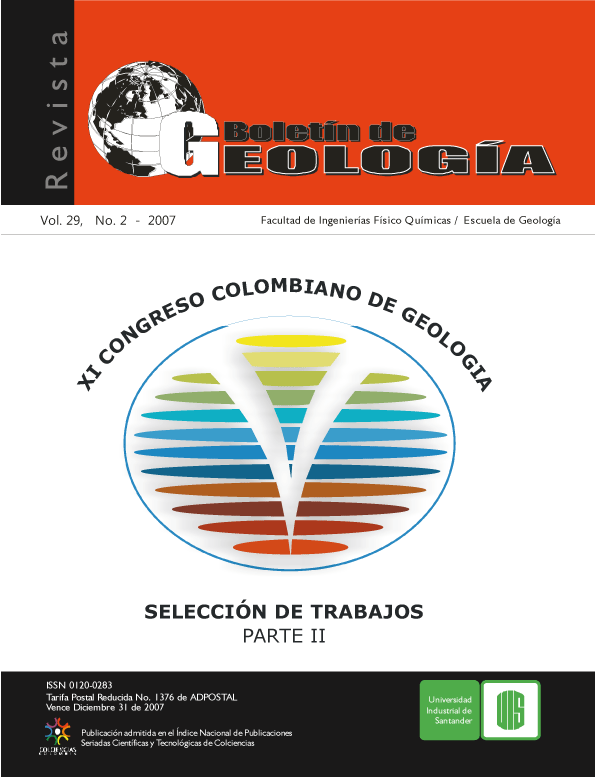SHORE EROSION BETWEEN ARBOLETES AND PUNTA SAN BERNARDO, CARIBBEAN COAST OF COLOMBIA
How to Cite
Abstract
The present morphology and the inventory of the historical shoreline changes (1938-2005) between Arboletes and Punta San Bernardo evidenced a strong erosional trend along 160 of its 180km total-length, resulting in the disparition/retreat of numerous beaches, followed by the consequent fooding/erosion of the adjacent littoral terraces and mangrove swamps. In general terms, the littoral Arboletes-Punta San Bernardo retreated 30 to 100m during the last seven decades, at rates between 0.5 and 1.5 m/year; maximum values were found at some critical sectors in the Arboletes-Punta Brava shore segment where magnitudes of coastline retreat were in the order of 900-1.500m at erosion rates up to 70 m/year during the period 1960-1975. Shore erosion in the study area results both from marine and subaerial processes and the combina-tion of geological factors (neotectonism and effects of mud diapirism, minor stocks of sands, relative sea level rise, poor geotechnical characteristics of cliff´s rocks) and human interventions (intensive sand mining from beaches and rivers, land uses with inadequate water management practices, adverse effects of groins and other rigid structures of defense). The precise defnition of each one of these factors is necessary for planning the development of the area considering the future sea level rise associated to the Global Climate Change.
Key words: Colombia, Caribbean Coast, beach erosion, cliff erosion, groins
Downloads
References
Bird, E. F. C. (1985). Coastline Changes, a Global Review. John Wiley&Sons, New York. 219p.Brunn, P. (1962). Sea-level rise as a cause of shore erosion. Proceedings of the American Association of Civil Engineers, Journal of Waterways and Harbour Division. Vol. 88, pp. 117-130.
Carvajal, J. (1992). Consideraciones acerca de los Problemas Erosivos de San Bernardo del Viento, Paso Nuevo, Puerto Escondido y Puerto Rey, Departamento de Córdoba. Informe inédito Ingeominas, Cartagena, 35p.
CVS-Invemar (2003). Estudio de los procesos costeros que toman lugar en las inmediaciones de Paso Nuevo, La Rada, Cristo Rey, Puerto Escondido, los Córdobas y Puerto Rey-Minuto de Dios, en la Costa cordobesa. 120p
CVS-Universidad EAFIT (2006). Análisis de las Causas y Monitoreo de la Erosión litoral en el Departamento de Córdoba. Informe final, actividades del convenio de transferencia horizontal de tecnología No. 30. Montería. 170p
Correa, I. D., Gonzáles, D. y Alcántara, J. (2005). Historical and Recent Shore Erosion along the Colombian Caribbean Coast: Journal of Coastal Research, Special Issue, No. 49, pp. 52-57
Correa, I. D. y Vernette, G. (2004). Introducción al Problema de la Erosión Litoral en Urabá (Sector Arboletes-Turbo), Costa Caribe colombiana. Boletín de Investigaciones Marinas y Costeras del Invemar, Vol. 33, pp. 5-26
Correa, I. D. y Morton, R.A. (2006). Coasts of Colombia. En: sitio web del United States Geological Survey, http://coastal.er.usgs.gov/coastal-colombia/, consultado el 30/03/2007.
